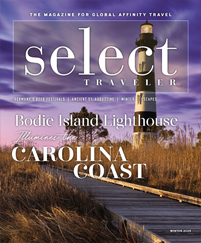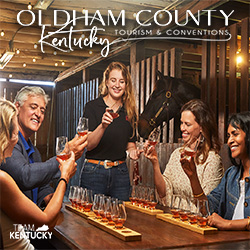Salzburg
The following day, I joined Lisa Solakian, a travel executive with AvisBudgetGroup, and her husband, Greg, for lunch on the terrace of the Hoensalzburg Castle overlooking Salzburg. We had just finished a walking tour and had a couple of hours, so we headed for this 900-year-old fortress in the foothills of the Alps.
On a perfectly clear afternoon, our gazes wandered from the colorful city beneath us to snow-covered peaks a few miles away. Hang gliders dipped and rose on alpine currents before landing in valleys below.
Mirabell Gardens adds bold strokes of color to Salzburg’s Old Town district. Fifteen gardeners tend more than 35,000 flowers at Mirabell, which was the setting for several memorable scenes in the 1965 film “The Sound of Music.” Composer Wolfgang Amadeus Mozart grew up in a fourth-floor home a few streets away.
Salzburg’s Baroque architecture is iconic, enough so that the city has been designated a UNESCO World Heritage Site. Trendy shops and restaurants line the busy Getreidestrasse, only a block away from the city’s bustling outdoor market.
From there, it’s an easy walk to the stately Salzburg Cathedral, home to the city’s Catholic archdiocese. A boisterous wedding party was perched on carriages in the cathedral square when we arrived.
Durnstein
Armed with a full bottle of water, I trekked up the well-worn path to the prominent medieval castle ruin in Durnstein. This lovely little Austrian village sits in a bend on the Danube in the Wachau Valley, another UNESCO World Heritage Site. The valley is a world-class winemaking region, famous for its reislings.
Durnstein basically consists of two streets: one that follows the river and another that dissects its town center. There are no bridges. Ferries take villagers across the Danube to flat land, where many have homes.
“We have three ferries,” said our guide. “We jump up and down until he sees us and comes over to get us. We are emotionally attached to the river. It’s in our hearts and in our souls — and sometimes in our living rooms.”
It was 20 minutes and 500 feet up the mountainside to the castle ruins. From there, I could see the sunlit Melk Abbey maybe 10 miles upriver. This medieval fortress is famous for housing England’s king, Richard the Lionhearted, as prisoner of the Duke of Austria in 1193.
“This is the easiest vacation you can do with your group,” Brenda Fullerton told me later. Fullerton manages the travel program for First Citizens Bank in Elizabethtown, Kentucky. “As a group leader, you can relax and enjoy the cruise because everything is constantly overseen. Huber and Monika [our tour directors] have made my job easy.”
Vienna
Schonbrunn Palace in Vienna was the summer home for numerous Hapsburg rulers and family members for centuries. Today, Schonbrunn is a museum and seems opulent to the point of excess, but this was a different era. From the 13th century through World War I, there was some aspect of the Hapsburg monarchy in place, a remarkable run by any measure.
Schonbrunn is closely associated with Maria Theresa, the only queen who ever ruled the Hapsburg dynasty. She completed much of the palace and palace grounds during the 18th century.
“All the paintings she commissioned included a likeness of Mozart in the crowd as a sign of her respect,” said our guide.
After a partial tour of the palace, we walked the grounds. I circled the statue of Neptune at the base of the hill leading to the Gloriette, built by Maria Theresa in 1775 for viewing the palace gardens. Today, Schonbrunn’s public grounds teem with joggers and bicyclists.
That afternoon, several of us stayed in Vienna. I walked to St. Stephen’s Cathedral, a city landmark, and continued on the Kartnerstrasse for several blocks to the Albertina Museum. I bought a ticket for an art exhibit that included works by Picasso, Monet and Chagall. Afterward, I sat at an outdoor cafe and enjoyed a beautiful spring afternoon.









